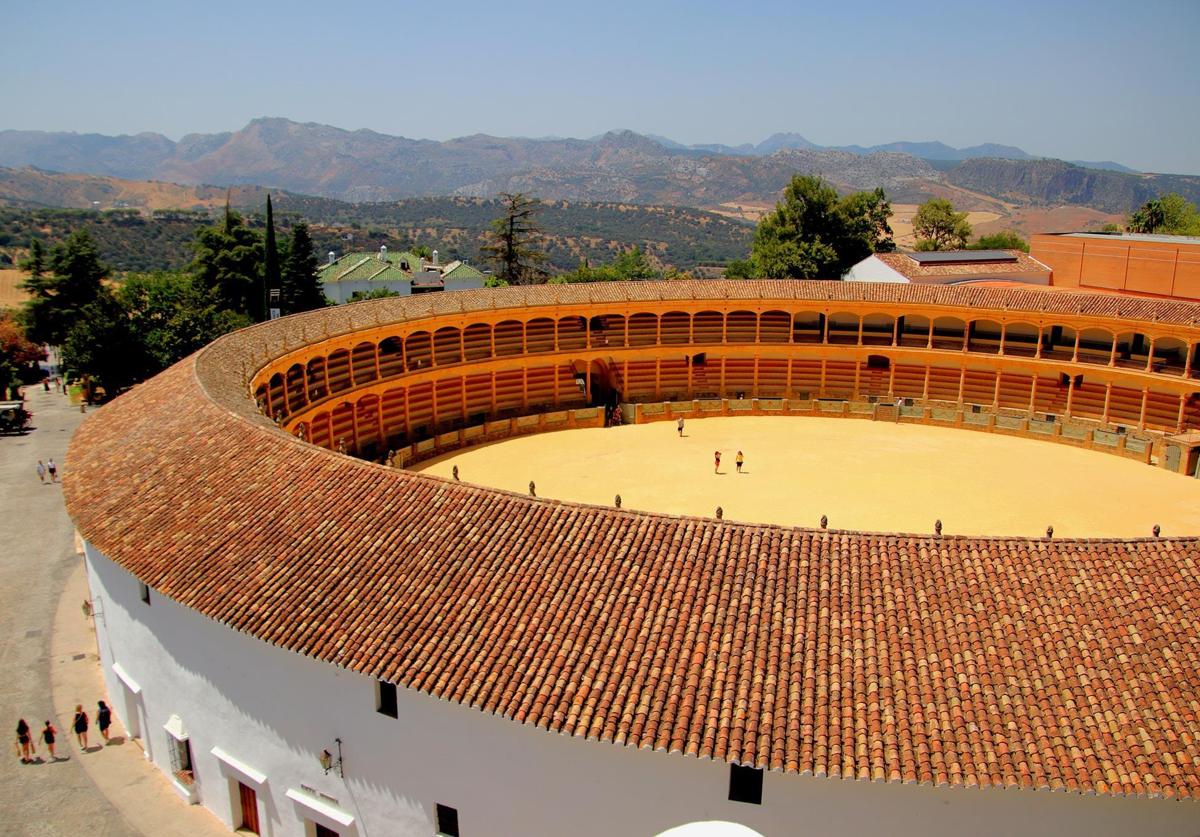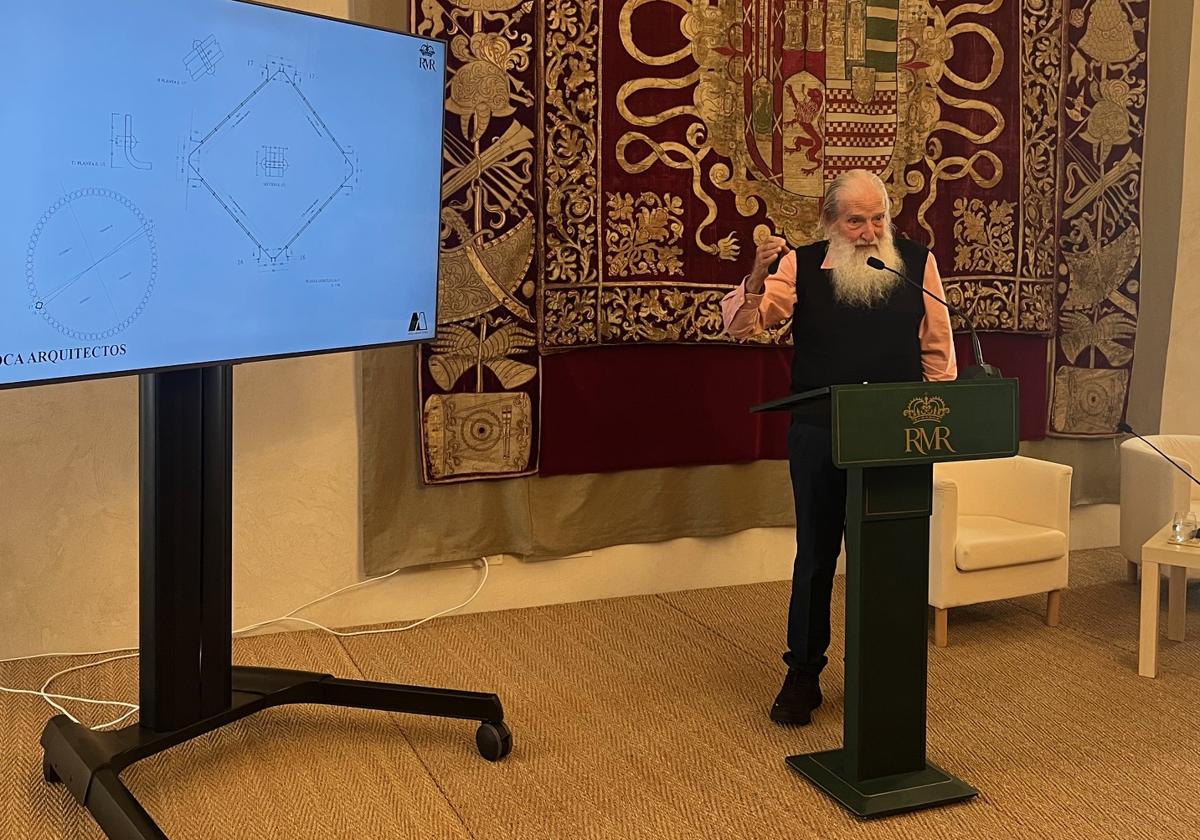

Sections
Highlight

The repair work on Ronda's bullring, which is listed as an 'asset of cultural interest' (BIC), will cost three million euros. The project will involve installing a steel structure on the roof of the upper gallery of the bullring to "freeze" the current movement in this historic building and will take "at least" a year once the work begins in approximately "a month or a month and a half."
This was outlined last week at a presentation in the grand hall of the Real Maestranza de Caballería, the association that owns the bullring. The plan was unveiled by Rafael Atienza (the organisation's second-in-command), Ignacio Herrera (director-general) and the architect in charge of the refurbishment project, Ricardo Aroca, from Murcia.

Atienza explained that this project faces two challenges: one of a technical nature as it is a renovation of "enormous scope and complexity" and another of an economic nature, as the investment will exceed three million euros and will be taken on alone by the Real Maestranza, which will mean "sacrificing and relinquishing" other projects taken on by the institution. Regarding how long the work will take, Aroca specified that it could last a year.
The architect added that it is a "delicate" project due to the nature of the building and the work needed, and that both he and the company that will eventually carry out the work have never taken on a project of this calibre before. "In practical terms, we could run into difficulties, so we could be tied to a date. The safety of the building and of the people is paramount", he stressed.
The timetable that the Maestranza and the architect are working to is that, while they await approval from the provincial heritage commission (required for any work on a BIC), this week they will apply for the building permit from Ronda town hall. Next week they will award the contract to one of the two companies bidding for the project. Once the teams are in place, the work can begin "a month or a month and a half from now."
When asked about a possible date for the bullring to once again host bullfighting events, including the Corrida Goyesca, the presenters gave no deadline. They insisted that the priority for now is to guarantee the safety of the building, built in 1785, and of the people, although the hope is that there could be bullfights in 2026.
Ricardo Aroca went on to give some details on the work to be done. He also reviewed previous renovation work, including that of Carlos Lamiable in 1876 and that of Francisco Pons-Sorolla and Ramiro Moya in 1965). The much-needed work will involve stabilising the structure of the high roof by means of a circular diaphragm of solid steel inserted to stabilise the shifting columns, to counteract the pressure from the wooden roof and to reinforce the connection between the archways and the masonry rings.
For this purpose, horizontal rhombuses and vertical slabs will be used as well as piers. These solid structures, about 8 centimetres high and 4 centimetres thick, are intended to prevent both lateral movement and any tipping into the central arena, the actual 'plaza'. The total weight will be around 15,000 kilos.
The second phase will consist of repairing and replacing all of the stone elements showing signs of deterioration, improving the structural integrity of the whole building.
Aroca explained that, given the irregular geometry of the plaza due to all the movement, the 136 elements that will provide the bracing to stabilise the building had to be individually designed. For the installation of these, the existing supports will be removed and the building will be temporarily shored up where needed. This will include adding support strapping to some columns to guarantee their integrity during the work. This level of technical complexity has led the architect to use the simile that the work will be "like changing your socks with your shoes on."
Work will be done alongside guided tours of the monument. Safety platforms have been designed to work on three or four columns at a time until all 68 columns that make up the bullring's iconic, upper gallery have been fixed.
Ignacio Herrera commented on the work undertaken in "record" time by the Real Maestranza and all the technical teams to diagnose the problem and find a solution. He added that one of the "nightmares" that hung over those involved was that the bullring would require being dismantled and reassembled, which would have lengthened the deadlines ad infinitum.
"This project is in the hands of those who best understand its technical complexity and historical value. With this intervention, not only is the plaza being protected, but Ronda is demonstrating its ability to anticipate a challenge that many other historic buildings will have to face sooner rather than later," Herrera said.
Publicidad
Publicidad
Publicidad
Publicidad
Esta funcionalidad es exclusiva para registrados.
Reporta un error en esta noticia

Debido a un error no hemos podido dar de alta tu suscripción.
Por favor, ponte en contacto con Atención al Cliente.

¡Bienvenido a SURINENGLISH!

Tu suscripción con Google se ha realizado correctamente, pero ya tenías otra suscripción activa en SURINENGLISH.
Déjanos tus datos y nos pondremos en contacto contigo para analizar tu caso

¡Tu suscripción con Google se ha realizado correctamente!
La compra se ha asociado al siguiente email
Comentar es una ventaja exclusiva para registrados
¿Ya eres registrado?
Inicia sesiónNecesitas ser suscriptor para poder votar.